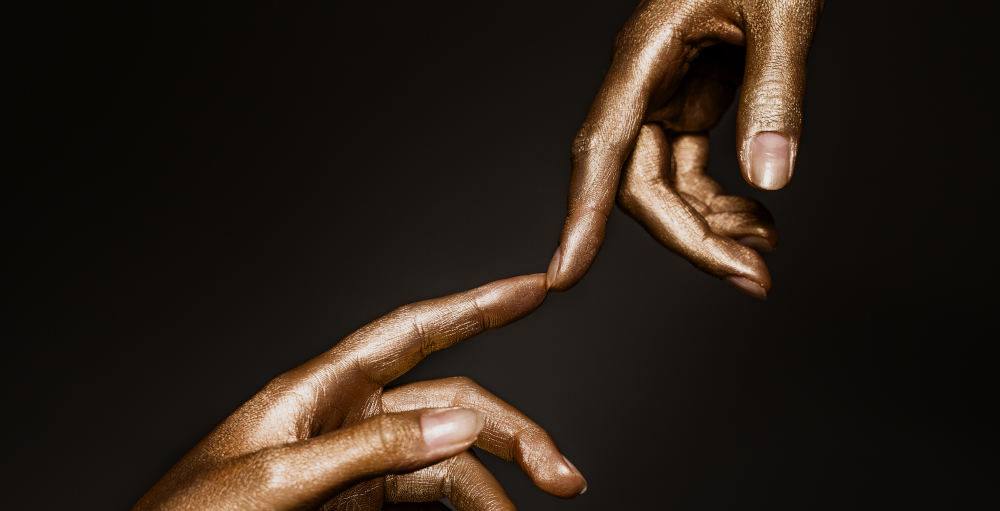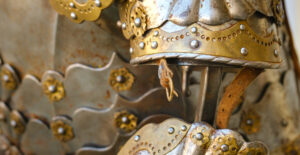
In a small church on the outskirts of Umlazi, light cuts through stained-glass windows, throwing fractured patterns onto polished wooden pews. At the front, perched on an otherwise simple altar, is a cross gilded in gold leaf, its surface dulled slightly by age but no less arresting for it. It isn’t ostentation. It’s a declaration. Across South Africa, gold isn’t just an economic pillar or a fashion statement. It’s a quiet, steady presence in spiritual spaces, whether in the form of a modest pendant around someone’s neck or a towering icon inside a cathedral. Its weight, both literal and symbolic, stretches beyond wealth into realms of belief, memory, and communal identity.
From Johannesburg’s gleaming megachurches to small village mosques in Limpopo, gold threads its way into rituals and relics. Walk into almost any traditional Zulu ceremony, and you’ll spot golden bangles worn not just as jewellery but as part of ancestral homage. In Hindu temples from Durban’s vibrant Indian Quarter, golden deities glint beneath flickering oil lamps. The use of gold isn’t uniform or prescribed, it adapts, bending to the shape of local faiths while holding onto its universal sense of the sacred.
What makes gold so entrenched in South African spirituality isn’t just its beauty. It’s the fact that it lasts. Unlike wood or cloth, gold doesn’t decay. It doesn’t rust. It endures across generations, from one ritual cycle to the next. That cross in Umlazi’s church wasn’t crafted last year. It’s been there for decades, outlasting renovations, changing congregations, shifting national climates. The same goes for ceremonial jewellery passed down through families, gold chains worn at baptisms, weddings, and funerals alike.
In Johannesburg’s Fordsburg, where Islamic and Hindu communities live side by side, goldsmiths still operate from discreet storefronts offering handcrafted religious items, Quran holders, intricately patterned incense burners, miniature Ganesh idols. Step inside, and the space smells of metal and memory. Here, gold isn’t sold as an investment strategy. It’s measured in sentiment.
Pastor Elias Ngwenya, who has spent thirty years leading services in Soweto, puts it simply, “Gold reminds us that not everything fades. We bless things with it. We wear it to carry part of that blessing ourselves.”
This isn’t just about individual faith either. There’s an unspoken hierarchy to spiritual objects, and gold consistently sits at the top. It’s why large churches or temples often reserve gold leaf finishes for their most sacred items, chalices, altarpieces, statues. These objects are meant to represent the divine, and what better material to mirror something enduring, untouchable, incorruptible?
Of course, there’s tension. In poorer communities, questions sometimes arise around whether gold in churches or temples is a form of unnecessary extravagance. After all, couldn’t that same money go towards feeding the hungry or housing the homeless? But many argue that gold’s role in spirituality isn’t about luxury, it’s about collective memory. It’s about marking something as sacred so future generations will remember its importance.
Walk through the Anglican Cathedral in Pietermaritzburg, and alongside the old hymns echoing through its stone hallways, you’ll notice delicate gold inlays on chalices and scripture covers, each one a quiet signal of reverence. It’s not flashy. It doesn’t need to be. The value isn’t in what it costs today, but in how long it lasts.
Interestingly, South Africa’s gold-rich soil has long fed this tradition. Historically, many of the materials used in local religious artefacts were sourced from mines not far from where those items would eventually reside. There’s a poetic loop in that, a country mining gold from its earth, only for some of it to end up not in vaults but in temples, mosques, churches, or worn around the necks of everyday South Africans.
Even in contemporary urban settings, gold’s spiritual role hasn’t diminished. In fact, it’s adapting. In Johannesburg’s evolving hip-hop scene, for example, gold crosses and medallions worn by artists are as much about ancestral pride as they are about fashion. For many, it’s about blending faith, culture, and identity in one visible, permanent form.
A particularly striking example comes from Cape Town’s Bo-Kaap, where Islamic prayer beads occasionally feature golden filigree worked into their strings, subtle but deliberate, balancing modesty with tradition. Ask a local imam, and he’ll tell you the same thing as Pastor Ngwenya, it’s about continuity. About linking the present with what came before.
 There’s also an undeniable intimacy to gold’s place in South African spirituality. While large public displays exist, so too does the quieter, more personal use, lockets holding scripture scrolls, small golden anklets worn during Hindu prayers, or gold earrings passed from mother to daughter as part of Zulu rites of passage. These aren’t museum pieces or financial assets. They’re living objects, charged with personal history and community significance.
There’s also an undeniable intimacy to gold’s place in South African spirituality. While large public displays exist, so too does the quieter, more personal use, lockets holding scripture scrolls, small golden anklets worn during Hindu prayers, or gold earrings passed from mother to daughter as part of Zulu rites of passage. These aren’t museum pieces or financial assets. They’re living objects, charged with personal history and community significance.
If you sit down with a family in Mpumalanga during a traditional ceremony, it wouldn’t be unusual to see a set of gold bangles laid out as part of the offerings to ancestors. They may not be solid gold, sometimes they’re mixed metals, but the intent holds. Gold isn’t there to show off, it’s there to signify respect, to say, “This is what lasts.”
As much as South Africa evolves, leaning into technology, reimagining its cities, shaping new cultural narratives, this quiet throughline remains. Gold, in all its forms, still carries the weight of belief.
What’s compelling is how this gold culture manages to feel both specific and universal. Whether it’s a grandmother’s gold necklace worn only at weddings or a golden icon kept locked away in a temple vault, these items speak to something larger, the human need to mark what matters. To make the invisible visible.
So next time you walk past a church in Durban or a temple in Laudium, glance closer. That small glint you catch out of the corner of your eye? It isn’t just decoration. It’s legacy in metal form, a thread stretching from the earth beneath your feet to the faith carried quietly in people’s hearts. And like gold itself, that thread isn’t likely to tarnish any time soon.



